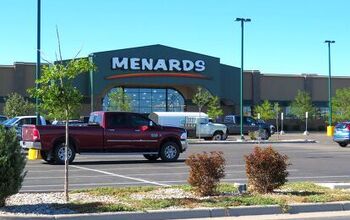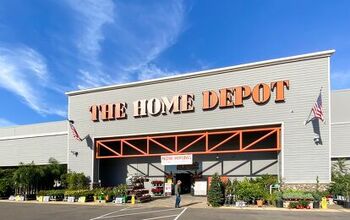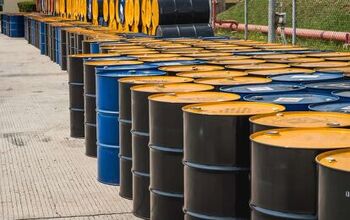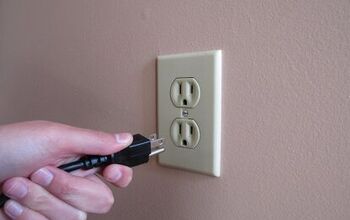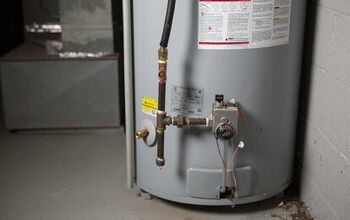What Breaks Down Fat In Drains?

No matter how careful you are, you’re bound to find some fat and oil in your kitchen sink drain. This is easily fixable in minor cases, but it can be devastating and expensive in severe cases. So, what breaks down fat in drains?
Acid cleaners and caustic cleaners can break down fat in drains, but they can also harm your pipes. Oxidizing cleaners are also harmful, as they generate heat, so you’re better off using enzyme cleaners. Otherwise, you can naturally break down fats with hot water, baking soda, and vinegar. Ultra-strength dish soap can also help dissolve fat in your drain.
Think twice before using commercial drain cleaners, as the damage to your pipes is irreversible. Enzyme cleaners are your best bet if you want to go the commercial route. Follow along as we explore what breaks down fat in drains and highlight the best options.
Seven Ways To Break Down Fat In A Drain
Today, you can find many drain cleaners that are marketed toward breaking down fat in drain pipes. While some are effective, they often come along with many downsides. That’s why we’re not only highlighting what breaks down fat in drains, but also exploring whether they’re worth using or not.
1. Acid Cleaner
You’ve probably encountered several acid-based commercial drain cleaners at your local home improvement store. They’re widely available and popular, as acid drain cleaners can break down fats and other clogs. However, you’re not alone if you feel hesitant about putting any type of acid down your kitchen drain.
You are correct to hesitate, because acid cleaners can harm your drain and cause some expensive plumbing problems. Acid drain cleaners typically contain hydrochloric acid or sulfuric acid, both of which are powerful. They come in different concentrations depending on the brand and what the cleaner is meant for.
The reaction of the acid in your drain can generate enough heat to break down clogs. Unfortunately, that heat is also strong enough to damage your drain and pipe seals, so you must think twice before using it. You must also protect your hands, eyes, and mouth before applying an acid cleaner. Consult a plumber before using an acid cleaner.
2. Caustic Cleaner
Sodium hydroxide, also known as lye, isn’t something most homeowners rush to bring into their home. However, that’s exactly what you’ll do if you buy a standard caustic drain cleaner, like Drano. Caustic drain cleaners are quite controversial among homeowners, landlords, and plumbers, and it’s with good reason.
You can seriously hurt yourself if you spill some Drano on yourself. Similarly, you can injure a plumber if you don’t tell them that you used a caustic drain cleaner before they access the pipes. That said, many people use caustic drain cleaners somewhat regularly, as Drano breaks down fat in drains quite well.
However, it comes at the expense of melting, corroding, and warping pipes, which is irreversible. You can replace damaged pipes, but you can’t simply un-melt a PVC pipe. It’s okay to use Drano in an emergency, but making a habit of it can ruin your pipes and cost you a fortune.
3. Oxidizing Cleaner
As harmful as they may be, oxidizing cleaners can break down fat in drains. However, it’s important to say that we don't recommend using them, at least not regularly. Oxidizing cleaners take electrons from food remnants and grease, and use them to generate heat.
This heat can help liquefy the fat and grease and break food remnants down into smaller chunks. This all sounds great on paper, but they aren’t useful for long-term use. In some cases, they can even make your problem worse, especially if you have a severe clog.
That’s because the clog may dislodge, travel further down the pipe, and get stuck again. Now, the clog is stuck in a much harder-to-reach part of your plumbing. It can break down fat, but you must consider whether or not it’s worth using oxidizing cleaners.
4. Enzyme Cleaner
Of all the drain cleaners we’ve mentioned so far, we haven’t mentioned anything natural. That’s because most commercial drain cleaners are filled with caustic chemicals, except for enzyme cleaners. Enzyme cleaners are unique in that they contain natural enzymes and bacteria instead of acid and harsh chemicals.
They may not work quite as quickly as caustic or acid cleaners, but they won’t harm your pipes. The only risk with enzyme cleaners is that you may discolor the metal in your sink. You can avoid this problem if you pour the enzyme cleaner directly into the drain to ensure it doesn’t sit on the metal.
An enzyme cleaner naturally breaks down fat in drains without generating lots of heat. Instead, the enzymes and bacteria break the fat and oils down, making them easier to clear. After using an enzyme cleaner, you must run hot water for up to 5 minutes, and your drain should clear.
5. Hot Water
Hot water on its own isn’t necessarily the greatest solution for a clogged drain. However, it can help dislodge and break down fat and oil in your drain. Drains get clogged when food swells and grease hardens on the pipes beneath your sink.
You can use hot water to soften these blockages and restore a healthy flow of water. That said, this only typically works on mild clogs, as thick grease clogs may soften, then harden again further down the drain. In that case, it’s only a temporary fix and may even worsen your problem, depending on how far the grease travels.
That said, you can prevent many common clogs if you regularly run hot water down your drain. Ideally, you should run hot water each time you use your disposal, and leave it running for a minute afterwards. It’s also a great idea to pour a pot of almost-boiling water down your drain once or twice per month.
6. Dish Soap
You don’t necessarily need to buy commercial drain cleaners if you’re worried about fat in your drain. In minor cases, you can use something as simple as dish soap to break down fat. For example, Dawn Ultra Platinum is especially useful for breaking down fat in kitchen sink drains.
Some dish soap even contains enzymes meant for breaking down fat, oil, and grease. If your sink is full of water, you must siphon it out or remove it with a bowl or cup. Next, pour up to ½ cup of dish soap directly into the drain and let it sit for 20 minutes.
Heat a pot of water until it’s about to boil, then pour it down the drain. This should help soften clogs and break down the fat in your sink. Keep in mind that this doesn’t work in extreme cases, but it’s perfect for minor issues and preventative maintenance.
7. White Vinegar And Baking Soda
Many people remember the classic baking soda and vinegar experiment from their childhood. That reaction you witnessed is just as good for your drain as it is cool to watch. This is especially useful if your drain is full of fat and other debris, as the reaction can break it down.
Before you start, pour a pot of almost-boiling water down the drain to soften everything. Next, measure ½ cup of baking soda and pour it down the drain. Let it sit for a moment. Measure 1 cup of white vinegar and pour it down the drain, and cover the opening.
You can use a wet rag to plug the opening or cover it with a drain stopper. Let the reaction play out for up to 30 minutes, then pour another pot of hot water down the drain. This should help break down the fat in your drain and dislodge clogs.
Summing It Up
Acid cleaners, caustic cleaners, and oxidizing cleaners can all break down fats in your drain. The problem is that they can also warp, melt, and corrode your pipes, so they aren’t worth using. You’re better off using hot water, dish soap, and an enzyme cleaner, as they won’t harm your pipes.
Related Guides:

Nick Durante is a professional writer with a primary focus on home improvement. When he is not writing about home improvement or taking on projects around the house, he likes to read and create art. He is always looking towards the newest trends in home improvement.
More by Nick Durante


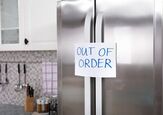









![Finishing Basement Without Permit [Is It Really Illegal?]](https://cdn-fastly.upgradedhome.com/media/2023/07/31/9070078/finishing-basement-without-permit-is-it-really-illegal.jpg?size=350x220)
